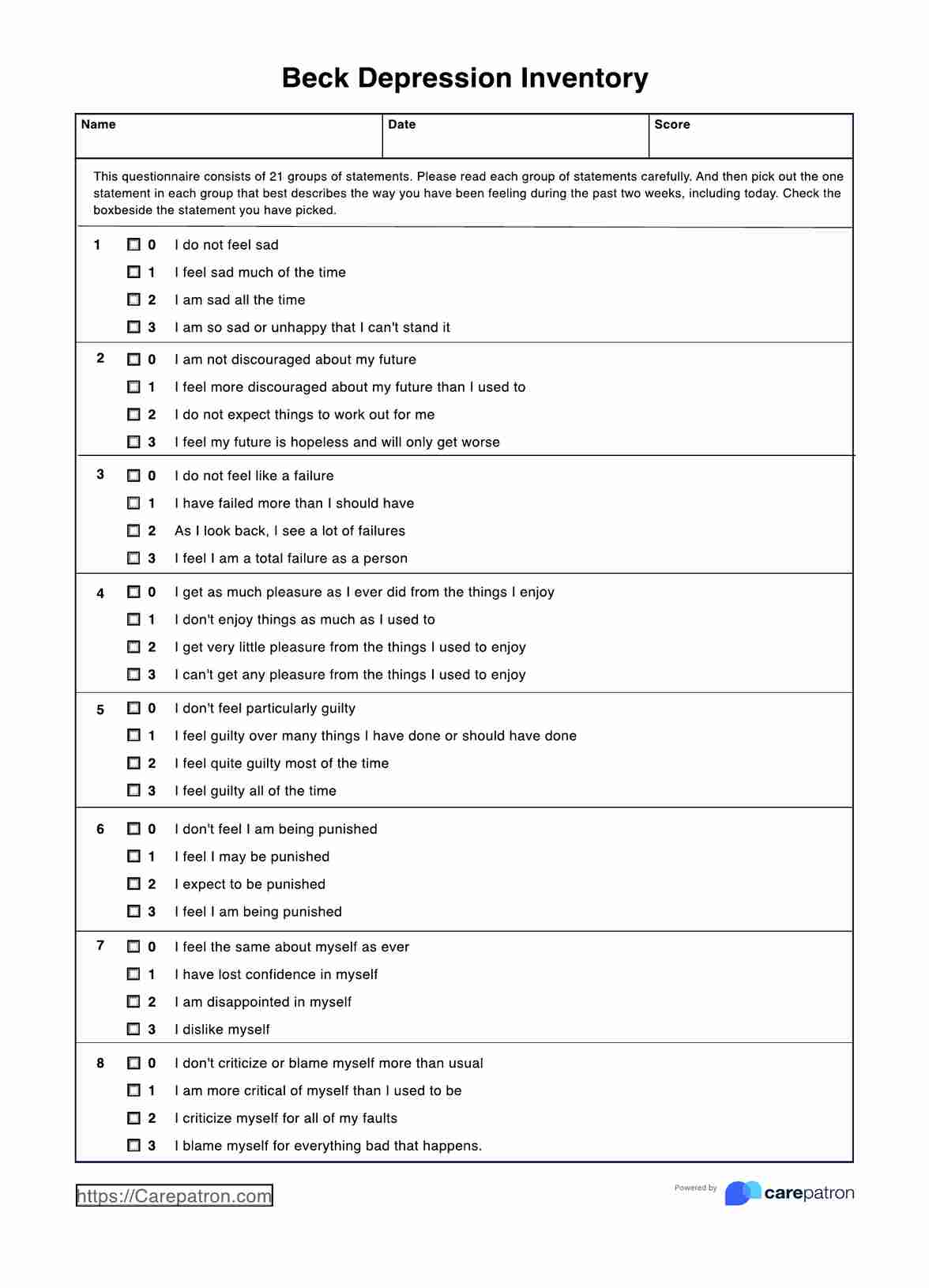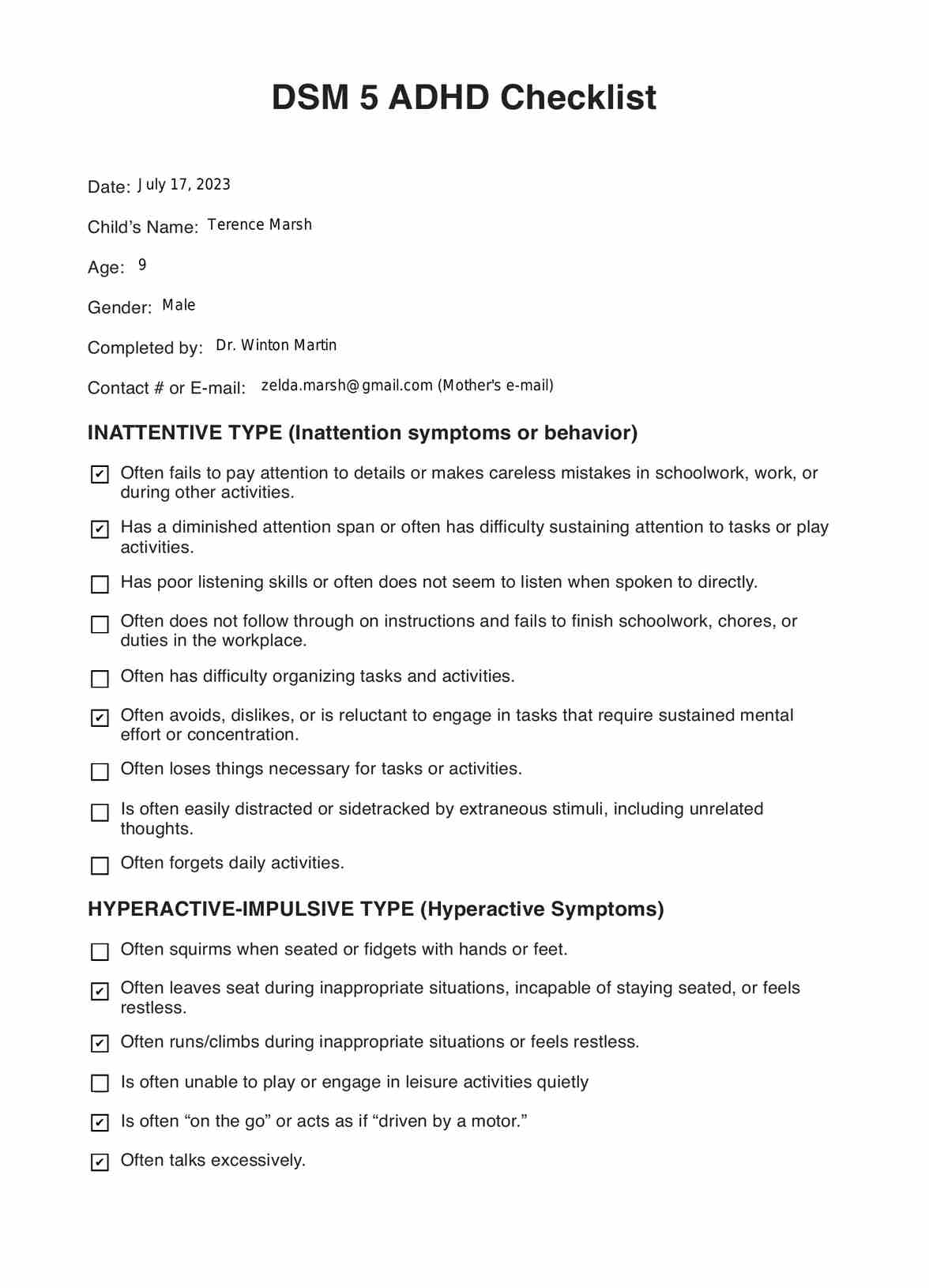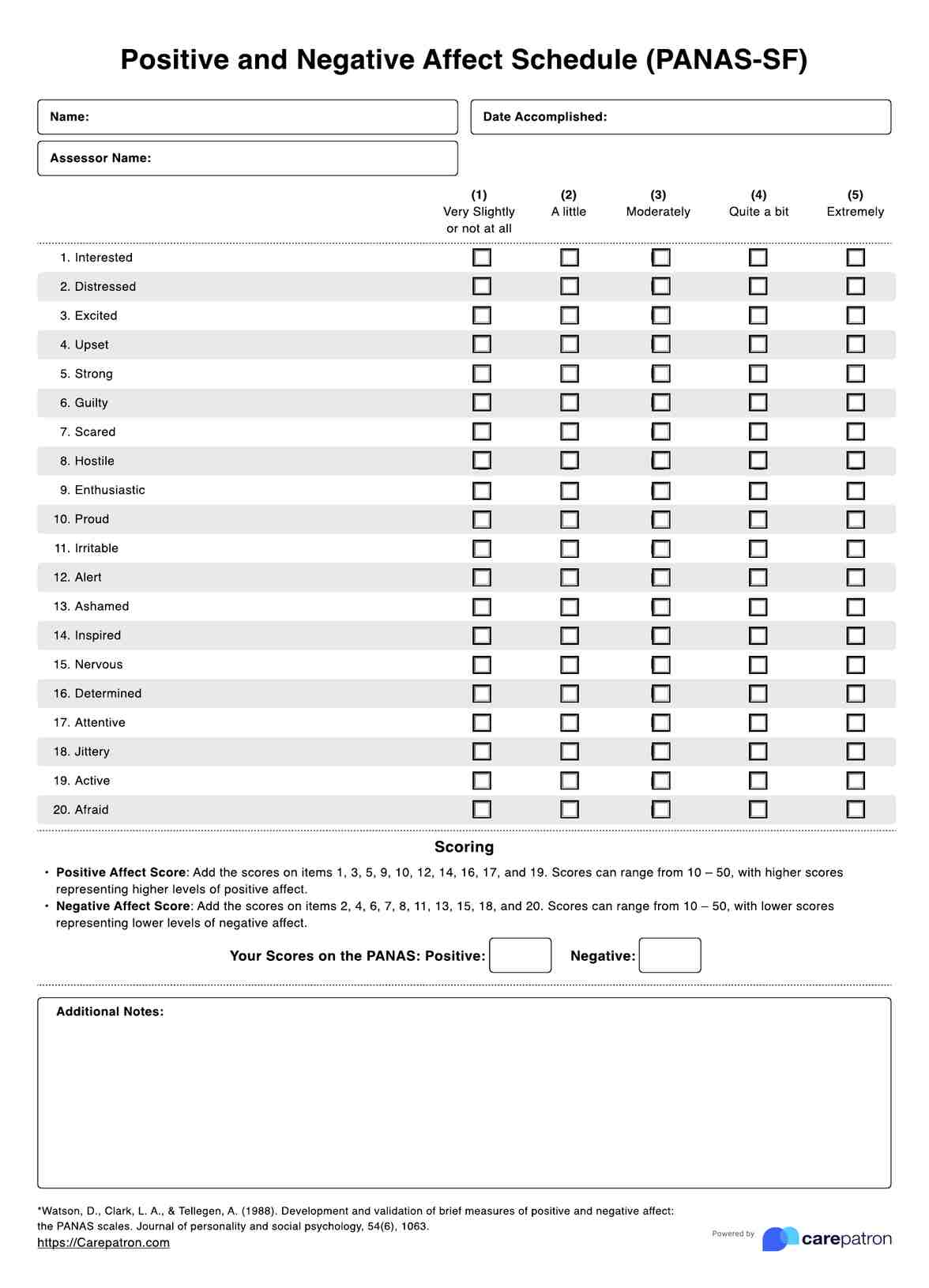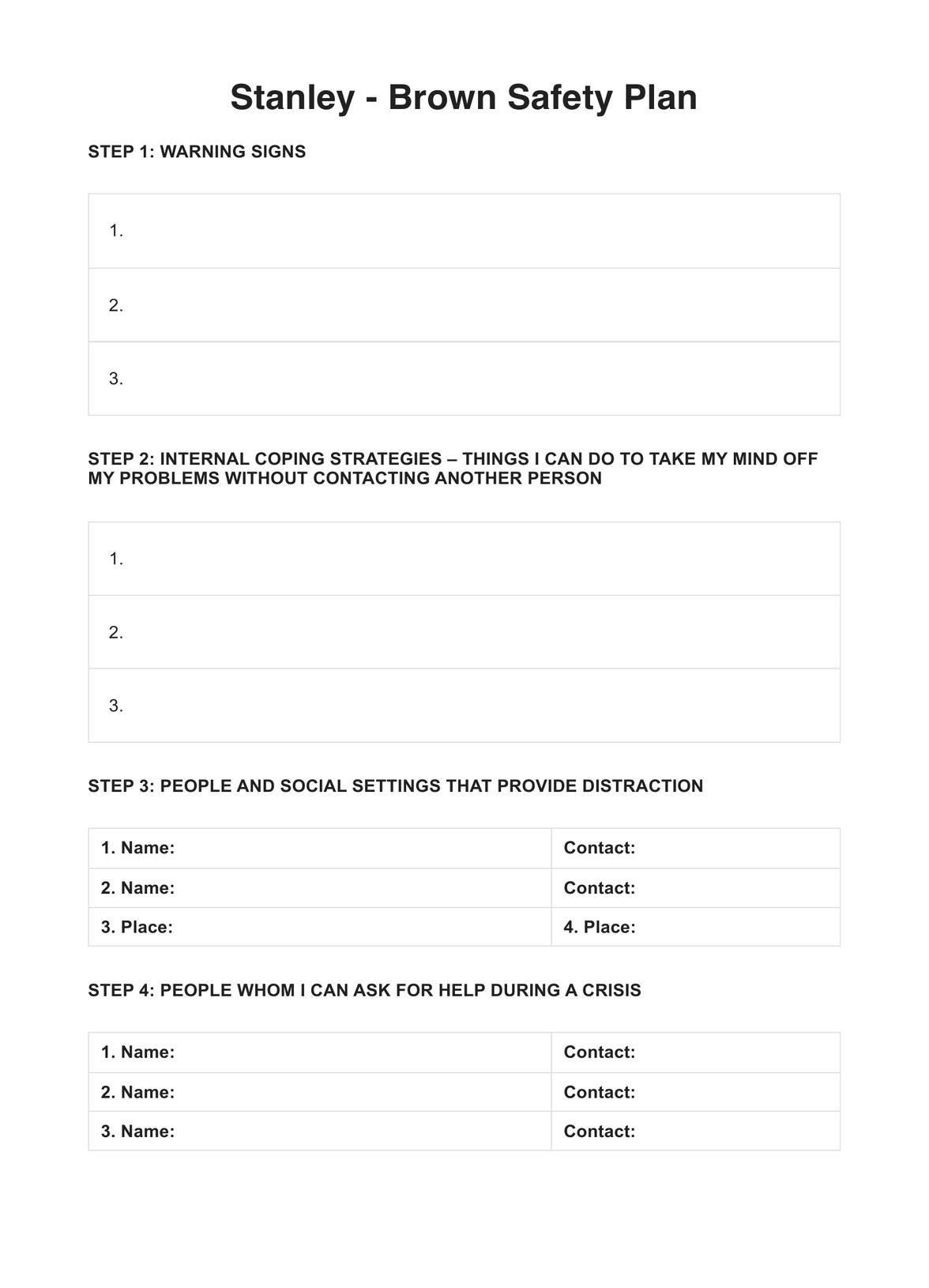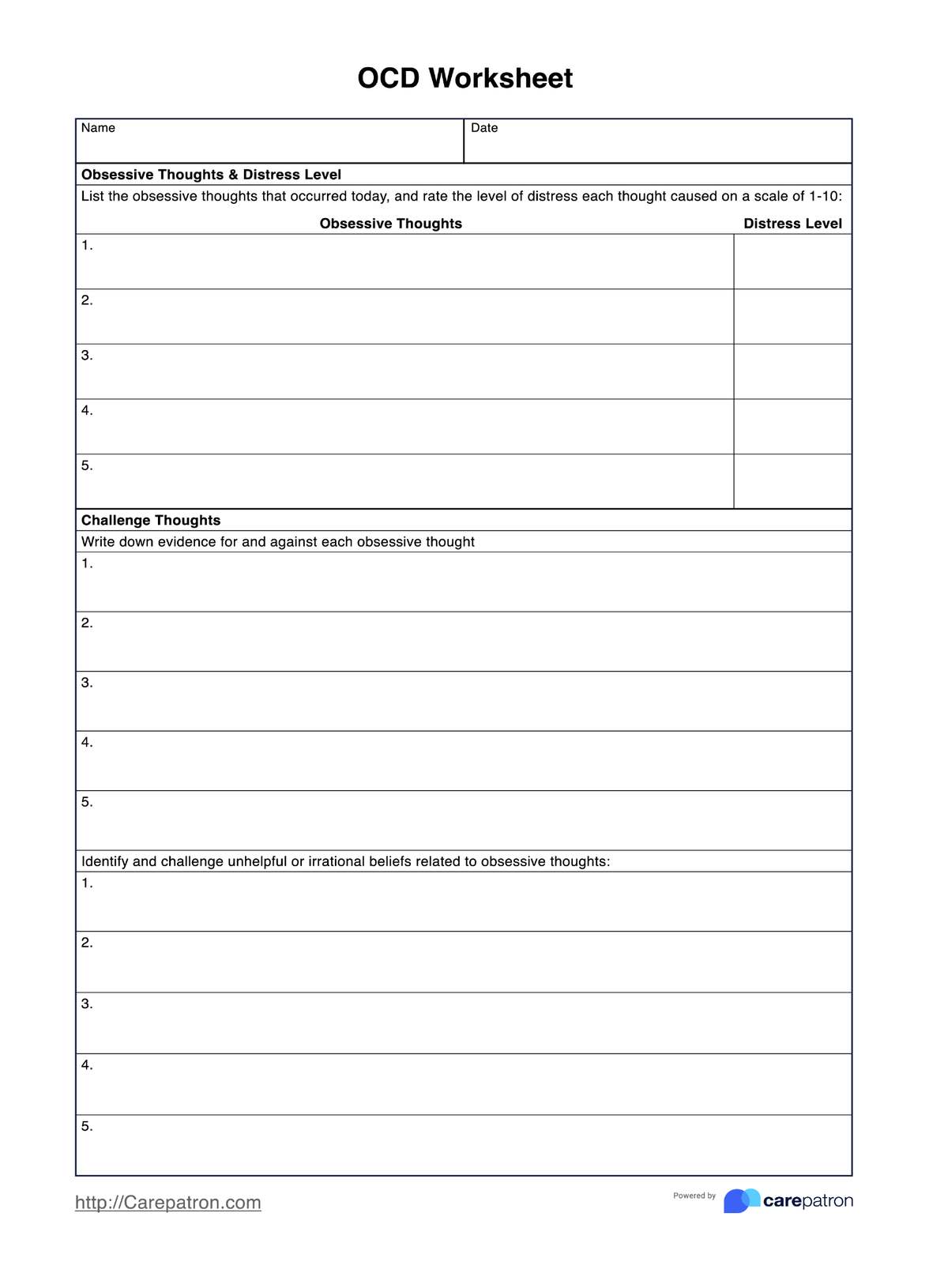Pervasive Developmental Disorder Test
Explore early detection of PDD with our screening test, guiding further evaluation and tailored interventions for developmental support.


What is a pervasive developmental disorder?
Pervasive Developmental Disorders (PDD) encompass a group of conditions characterized by delays in the development of socialization and communication skills. Among these, autism spectrum disorder is prominent, often identified by repetitive behaviors and significant difficulties in communication. An early diagnosis of autism spectrum disorders is crucial, as it can significantly impact a child's ability to navigate their world, from managing repetitive body movements to enhancing their social interactions and language development. It is vital in autism diagnosis.
Pervasive Developmental Disorder Test Template
Pervasive Developmental Disorder Test Example
Signs and symptoms of this disorder
The signs and symptoms associated with Pervasive Developmental Disorders (PDD) are broad and varied, reflecting the complexity of these conditions. Understanding these signs in depth is crucial for early identification and support.
Social interaction difficulties
Children and individuals with PDD often find social interactions challenging. They may struggle to form connections with peers, exhibit a lack of interest in sharing experiences or achievements, and may not respond in typical ways to social cues such as eye contact, facial expressions, and gestures. This difficulty in engaging with others can appear as early as infancy when a baby or toddlers might not look at caregivers or smile in response to human interactions.
Communication challenges
Both verbal and non-verbal communication skills can be affected. Some individuals may experience significant delays in speaking or may not develop spoken language at all. Others might have a good vocabulary and clear speech but struggle with the use of language in a social context, such as understanding jokes, idioms, or the give-and-take nature of conversations. Non-verbal communication, including making eye contact, using gestures, and interpreting body language, is also commonly impaired, making it hard to express needs or understand others' intentions.
Repetitive behaviors and restricted interests
A hallmark of PDD is a pattern of repetitive behaviors and restricted interests. This can manifest as a preoccupation with a narrow topic of interest, repetitive movements such as rocking or hand-flapping, or a rigid adherence to routines and rituals. Changes to these routines or the environment can be extremely distressing for someone with PDD.
Sensory sensitivities
Many individuals with PDD have unusual responses to sensory stimuli. This can include over-sensitivity or under-sensitivity to sounds, lights, touch, tastes, and smells. For example, a child might be overwhelmed by the noise in a busy classroom or might not react to temperatures in the way one might expect.
Variability in intellectual functioning and motor skills
There's a wide range of intellectual abilities among those with PDD, from significantly challenged to above-average intelligence. Similarly, motor skills can vary; some individuals may have clumsy, uncoordinated movements, while others do not show any motor delays.
Emotional regulation difficulties
Challenges in understanding and regulating emotions are common. This can result in extreme expressions of frustration, anxiety, or distress in situations that others might find easily manageable. Difficulty in perceiving and understanding the emotions of others can also lead to misunderstandings and social isolation.
Recognizing these signs and symptoms early on allows for the implementation of intervention strategies that can significantly improve the developmental trajectory and quality of life for individuals with PDD.
Causes of this disorder
Understanding what causes Pervasive Developmental Disorders (PDD) is tricky because there's no single reason. Here’s a simpler look at the main factors:
- Genetics: Just like how we inherit eye color from our parents, PDD can run in families. Scientists believe many different genes play a part, but there isn’t just one gene that causes it. It’s more like a mix that can increase the chance of having PDD.
- Environment: Things around us might also affect the risk of PDD. This includes what happens to a mom during pregnancy or if a baby is born very early. While no one thing in the environment is to blame, some conditions or exposures might make PDD more likely if the genetics are already in place.
- Brain development: People with PDD often have brains that work differently. This doesn’t mean they are less intelligent; their brains process information differently. This difference starts very early, even before birth, because of how the brain grows.
- Health during pregnancy: How healthy a mom is during pregnancy matters too. If a mom is sick or stressed, it might affect the baby’s brain development.
- Immune system: Some scientists are considering whether the immune system (which fights off sickness) might play a role. If the immune system isn’t working right, it could influence brain development, leading to PDD.
PDD is about a mix of genes, environment, and how brains develop. Catching it early can help, as we can start helping sooner with things like learning to communicate better or get along with others.
Diagnosis
Diagnosing PDD involves a comprehensive assessment that includes screening tests, language and social skills evaluations, and observations of behaviors. The process aims to identify the unique challenges and needs of each individual.
Why was the criteria for this removed in the DSM-5? Was it replaced?
In the DSM-5, the specific category of pervasive developmental disorders was replaced with the broader classification of autism spectrum disorder. This change reflects an effort to more accurately categorize the symptoms and behaviors of individuals within a single, more inclusive spectrum.
What is a Pervasive Developmental Disorder Test?
A Pervasive Developmental Disorder Test is a simple way to check if a child might have early signs of developmental delays like those seen in autism. This test looks at how kids play, learn, speak, and act to see if they're growing in the usual ways. If the test finds something that's not typical, it suggests that the child might need more checks to see if they have a developmental disorder.
Using this test early on is helpful. It means if a child needs extra help, they can get it sooner. This could be special teaching or therapy to help them talk, play, and learn. The goal is to catch any issues early so kids have the best chance to grow and learn. This test is the first step to determining what support a child might need to thrive.
How to use this Pervasive Developmental Disorder Test
Using the Pervasive Developmental Disorder Test is straightforward and accessible for parents or caregivers. The test consists of a series of questions that delve into various aspects of a child's life, specifically focusing on their behaviors, communication, and interaction with others. These questions are carefully crafted to uncover signs of developmental delays or concerns indicative of pervasive developmental disorders.
To begin, simply go through each question, reflecting on the child's recent behaviors and interactions involved. It's important to answer honestly and accurately to ensure meaningful results. Your observations and insights are invaluable in this process, as they provide a real-world glimpse into the child's daily life and developmental progress.
Once completed, the responses to the test will offer preliminary insights into whether the child's development is on track or if there might be areas of concern that require further professional assessment. This routine initial screening is a critical first step in identifying any need for more detailed evaluations, potentially leading to early interventions that can significantly impact the child's developmental journey.
Pervasive Developmental Disorder Test example
Our free PDF download offers a template example of a Pervasive Developmental Disorder Test. This tool is structured to help caregivers and professionals screen for PDD signs efficiently.
Download our free Pervasive Developmental Disorder Test template example here

What are the benefits of using this test template?
Utilizing this test template for Pervasive Developmental Disorders (PDD) offers several key benefits, making it an essential tool for parents, caregivers, and professionals. This template flags potential developmental concerns by streamlining the early identification process and sets the stage for timely and effective action. Here’s a closer look at the advantages:
- Early detection: Early detection is paramount in managing PDD effectively. This template highlights early signs of developmental issues, enabling caregivers to recognize potential concerns well before they become more pronounced. Identifying PDD early opens the door to interventions that can significantly improve a child's long-term outcomes.
- Guided intervention: With early identification through the template, professionals can tailor intervention strategies to the child's needs. This can include speech therapy, behavioral therapy, or social skills training, among other supports. Tailored interventions are more likely to be effective as they address the individual’s unique challenges.
- Resource allocation: Knowing early on that a child may need additional support allows families and educators to seek and allocate appropriate resources. This could mean enrolling the child in special education programs, finding suitable therapists, or accessing support groups and other community resources.
- Treatment planning: The insights gained from using the test template aid in developing a comprehensive treatment plan. This plan can encompass a wide range of therapies and supports designed to work together to address the various aspects of PDD.
- Reduced anxiety for caregivers: Having a structured tool to identify potential developmental issues can reduce anxiety for parents and caregivers. It provides a clear path forward for seeking further evaluation and support, eliminating the uncertainty that can accompany observations of atypical development.
- Fosters collaboration: This template can also facilitate collaboration between families and professionals. A standardized way to document observations ensures that all parties understand the child’s needs, which is crucial for effective intervention and support.
The benefits of using this Pervasive Developmental Disorder Test template extend far beyond the initial screening. It is a vital first step in understanding, supporting, and enhancing the developmental trajectory of children with PDD, ensuring they have the best possible foundation for growth and learning.
Can this template be used to diagnose PDD?
While this template is invaluable for screening, it cannot replace a formal diagnosis by a qualified healthcare provider. It will be a starting point for further evaluation, research and professional assessment.
What kinds of treatment and support are available for those with PDD?
For individuals diagnosed with Pervasive Developmental Disorders (PDD), a variety of tailored treatments and support mechanisms are available to address their unique needs and challenges. These interventions are designed to promote development and enhance quality of life, focusing on areas most affected by PDD.
- Behavioral therapy: This is a cornerstone of PDD treatment, aimed at improving social skills and communication and learning how to manage behaviors that may be challenging. Applied Behavior Analysis (ABA) techniques are widely used to reinforce positive behaviors and skills.
- Speech and language therapy: Speech therapy is crucial since communication difficulties are common in PDD. It helps individuals improve their ability to express themselves verbally and understand others, enhancing their interaction capabilities.
- Educational support: Tailored educational programs ensure that individuals with PDD receive the right support and challenge in their learning environments. These programs often include special education services, individualized education plans (IEPs), and classroom accommodations to facilitate learning.
- Occupational therapy: This therapy focuses on improving daily living skills, such as dressing, eating, and writing. It also addresses sensory integration issues, helping individuals manage over- or under-sensitivity to sensory stimuli.
- Physical therapy: Some individuals may benefit from physical therapy to improve motor skills, balance, and coordination, which can be affected by PDD.
- Social skills training: This training assists in developing the necessary skills for interacting with others, understanding social cues, and building relationships.
- Parent and family support: Education and support for families are vital, providing them with strategies to support their child's development, manage behaviors, and navigate the challenges of PDD.
- Medication: While there is no medication to cure PDD, certain medications can help manage symptoms, such as anxiety, depression, or attention issues, that may accompany the disorder.
Early, customized intervention based on the individual's specific needs, strengths, and challenges is essential for maximizing their developmental potential and improving their overall well-being.
How can Carepatron help with development disorder-related work?
Carepatron is a vital telehealth platform for managing developmental disorders, offering tools that help caregivers and healthcare professionals. It simplifies organizing patient information and improves communication, making it easier to keep everyone updated on treatments and progress. With features like task reminders and progress tracking, Carepatron supports timely interventions and effective care strategies.
Our patient portal software reduces administrative tasks, allowing more focus on providing quality care and support to individuals with developmental disorders.

Commonly asked questions
Early signs of PDD can often be identified in infancy stages. Still, a formal diagnosis may not be made until the child is older, allowing for a more accurate assessment of developmental progress and challenges.
While there is no cure for PDD, various treatments and interventions can significantly improve the quality of life for those affected.
Parents can play a crucial role in their child's development through early intervention, seeking specialized support from doctors, and creating a supportive and understanding environment at home.

.jpg)
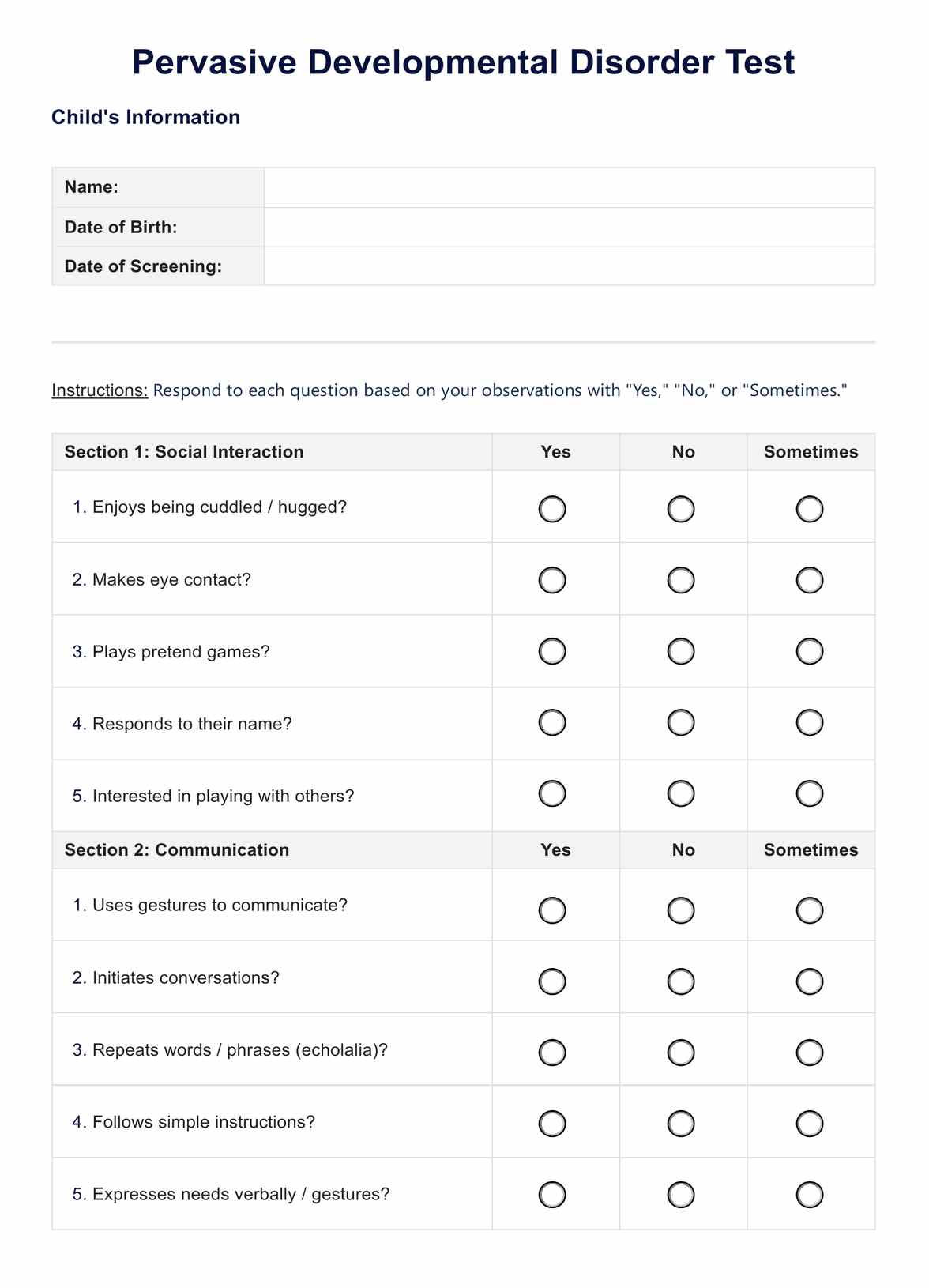
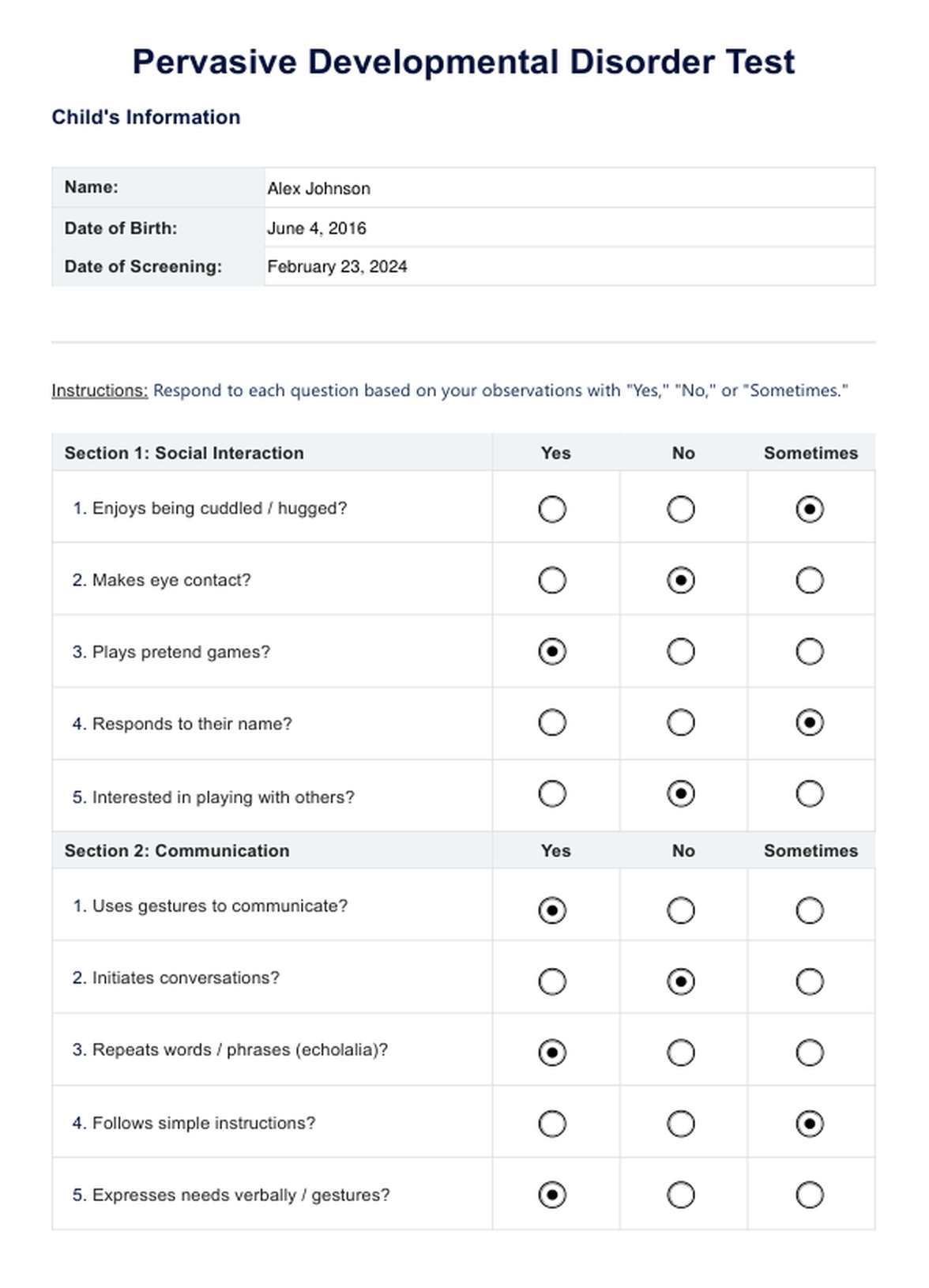

















-template.jpg)



















































































